
*******
Jan 18, 2023 Update:
I started my training using Uphill Athlete 24-Week Mountaineering Training Plan in 2020. There have been some changes at Uphill Athlete, which impact the content I have shared below, so I thought of giving a quick update.
Scott Johnston was the co-founder of Uphill Athlete. In Sep 2022, he left Uphill Athlete to start Evoke Endurance. 15 of the 17 coaches left with Scott to join him on this new journey. I provided community support (emails, forums, some backend) at Uphill Athlete, and I also joined Scott and his team.
Scott was the brains behind Uphill Athlete. He had developed most of the training plans, written most of the articles and replied to thousands of athlete questions on the forum and through email. Everything I know about training, I have learned from Scott. So, in the post below, I have updated all Training Plans, Phone Consultations and some other links from Uphill Athlete to Evoke Endurance. I feel it is the right thing to do.
Disclaimer: I work part-time for Evoke Endurance, but these are not affiliate links, and I do not make any money from promoting the training plan.
*******
In my last post, I shared the lessons I learned the first time I tried implementing an Uphill Athlete training program. In 2020, I was committed to doing it right, so I acted on the two key learnings – “ask for help” and “make training a priority.”
If you are new to training, I would recommend reading this article. It provides an excellent overview of different elements of the training.
Phone Consultation
Previously, I had tried to put together my own training plan based on the book Training for the New Alpinism (TfNA). It didn’t go well for me, so I decided to buy one of the training plans.
There are several plans to choose from, so I scheduled a phone consultation with Scott Johnston to pick the right one. I had met Steve House and Scott Johnston at the release of their new book “Training for the Uphill Athlete” in Vancouver in 2019. I was looking forward to my call with Scott.


Here are a few things we discussed on the call –
Background – I have a full-time office job, a young family, and did about 150-200 hours of exercise and climbing in 2019. Usually, I do rock climbing and mountaineering trips in summer (1-2 trips/month). Depending on the winter season, I might make a couple of ice climbing trips.
2020 Goals – I want to train for alpine climbing trips in the Pacific Northwest in summer and Ecuador volcanoes around the end of the year.
Considering I had minimal training background and likely limited aerobic capacity, Scott recommended the 24-week Mountaineering Plan. He also suggested that I should start with a lower training volume relative to what was given in the plan.
Training Plan & Training Peaks
Just having goals for the year and talking to Scott had upped my commitment level. I also signed up for a Training Peaks account, as it is required to access any Uphill Athlete training plan.
There were two main benefits of using Training Peaks and following a structured training plan –
a. Easy to follow the training: The entire 24-week training plan was laid out for me by experts. I didn’t have to spend any energy in putting together the plan.
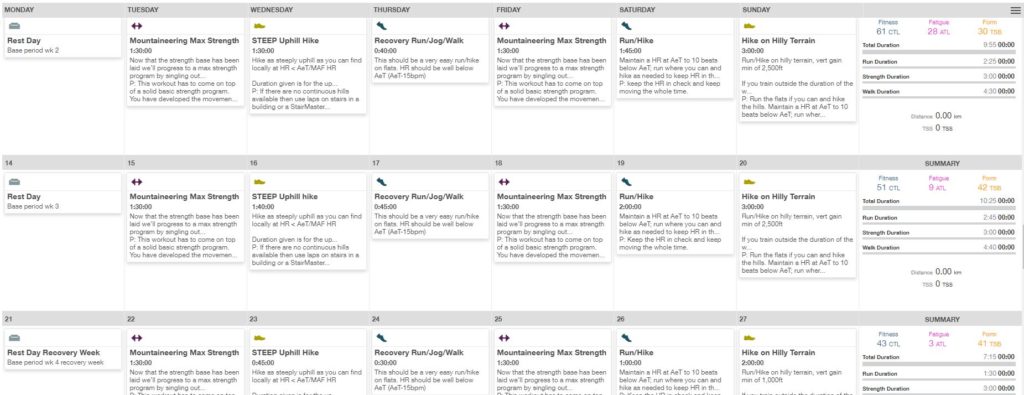
Each workout also included detailed instructions with everything I needed to know to complete it.

I just had to open the app or the email from Training Peaks to see the workout details. No thinking required.
b. Easy to track progress: Training Peaks premium account provides access to some advanced analytics. You can analyze metrics like Heart Rate, Elevation Gain, Training Stress Score, etc., for each workout.
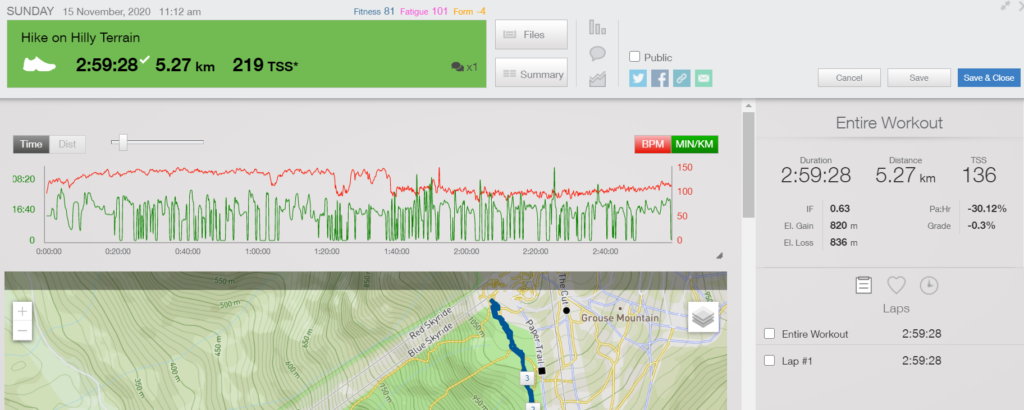
Also, there is a cool dashboard to track your progress over the training period. Although it is just an estimate, it was motivating to see my fitness metric – Chronic Training Load (CTL) increase over the training period.
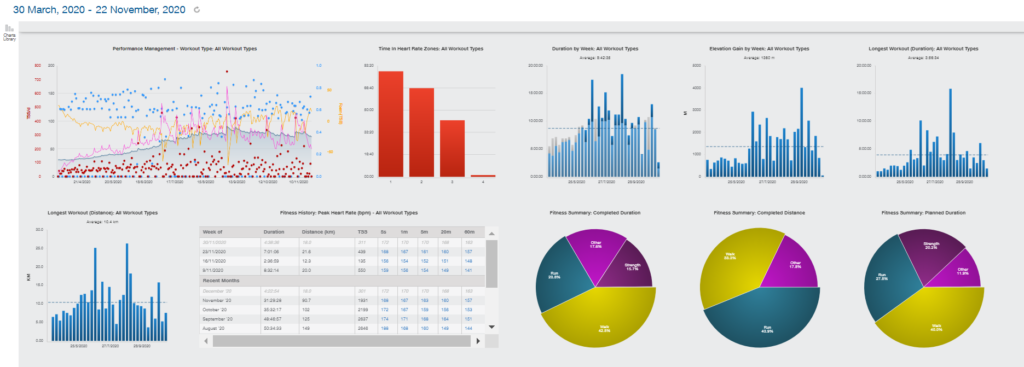
I got one-month free trial of the Training Peaks premium account when I first signed up. Based on all its features and its flexibility in making changes to the plan, I continued with the premium account.
I am not saying you need to use Training Peaks and one of the Uphill Athlete plans for your training. I just want to emphasize that these tools provided the structure I needed and helped me make training a priority.
Smartwatch and Chest Strap
To get started with my training, I needed a smartwatch with GPS to track heart rate and distance. Altimeter was not required, but a good feature to have since I was training for mountaineering.
I had never used a smartwatch before, so I didn’t want to spend a crazy amount on high-end watches. Based on the recommendations on Uphill Athlete and review on DC Rainmaker, I bought Coros Apex as it offered the best combination of features and price. Its excellent battery life was just a bonus that I would come to appreciate later.
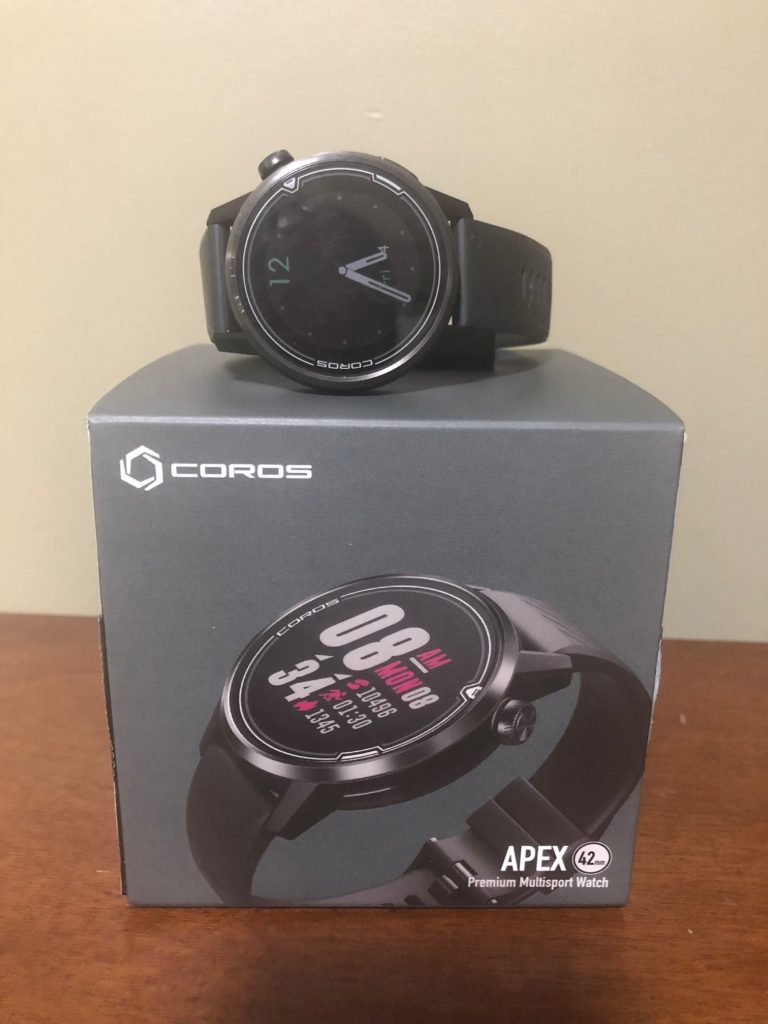
Uphill Athlete strongly recommends using a heart rate chest strap to accurately record heart rate, as wrist-based heart rate monitoring offered by a smartwatch is inaccurate. I bought Wahoo Tickr as it had good reviews and was cost-effective. (Update: I now use Polar H10)
With all the accounts and tools synced, I was ready for my aerobic assessment.
Aerobic Deficiency Syndrome
To train with the right intensity (heart rate zones), I had to identify my Aerobic Threshold (AeT) and Anaerobic Threshold (AnT).
I had no clue where my AeT was, so I did the first test with a target heart rate of 140. I got a heart rate drift of 7.2%, and the goal was to get a heart rate drift of less than 5%. After three more tests with a lower target heart rate, I settled on an AeT of 125.
It took some time to do my AnT test, and I estimated it at 167. My AeT and AnT spread was more than 10%, indicating that I had Aerobic Deficiency Syndrome (ADS). In other words, I was aerobically deficient. It didn’t come as any surprise, but now I had some way of quantifying it. I would be doing the majority of my aerobic base training in Zone 2 (Heart rate in 113-125).
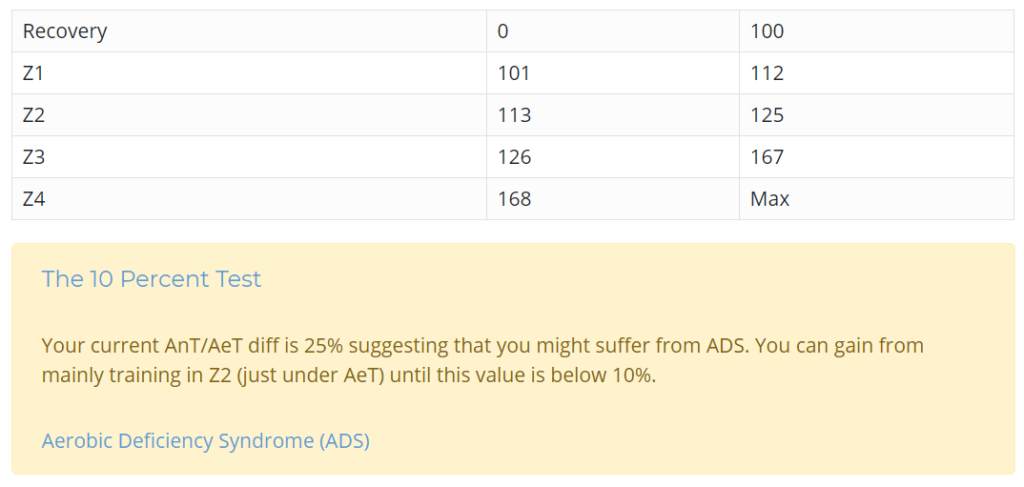
Transition Period
The transition period’s goal is to get familiar with training and prepare the body for the subsequent Base and Sport-Specific training. Each week in this phase included two core and general strength workouts, two aerobic workouts, one active recovery workout and one rest day.
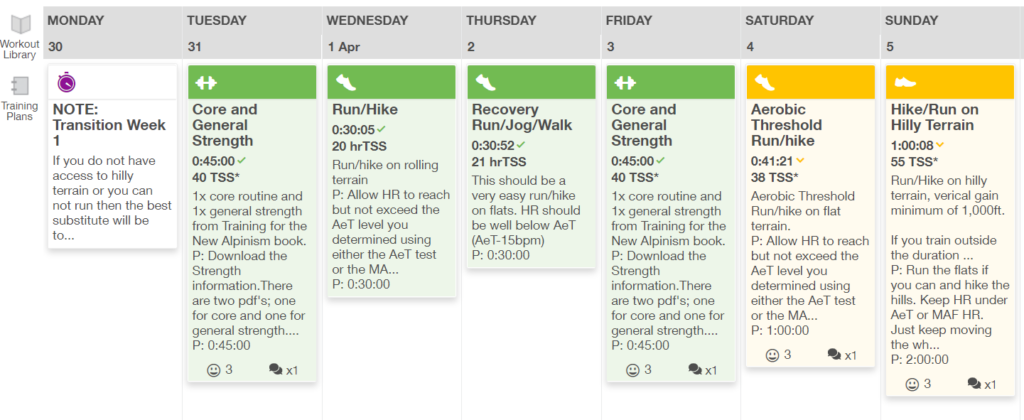
There are many variations of each core and general strength workout. Once I got comfortable with a workout, I switched to the harder variation. The majority of my weekday aerobic sessions were on the treadmill.
Over the weekend, I would do laps on Coquitlam Crunch steps (local trail with 450 steps, 21% grade). For longer workouts, I would head to Grouse Mountain and hike the Grouse Grind or BCMC Trail (roughly 28% grade). Early in the season, I would extend the hike and snowshoe to Dam Mountain.
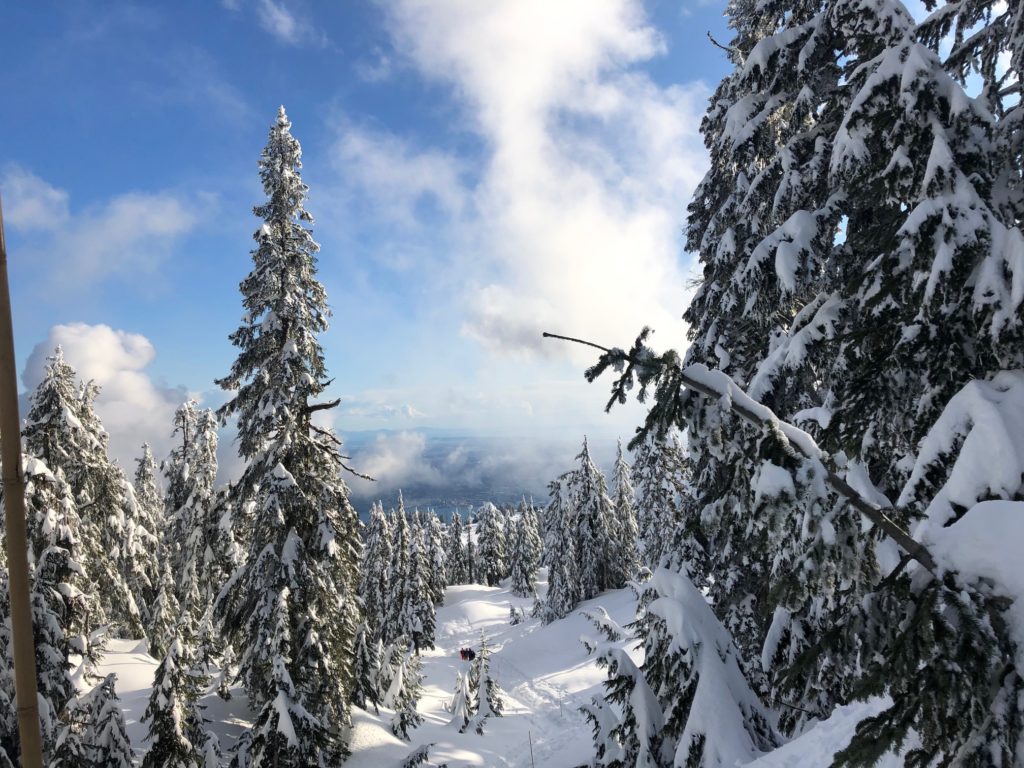
I was not training for ice climbing, but the ice climbing season in BC is so short and unpredictable that I climbed when I could. I made two trips to Lillooet during my transition period. One was to Marble Canyon, where I did a couple of single pitch WI4/5 climbs. Another one in the Duffy Lake area to climb Closet Secret, a multi-pitch WI4/WI4+ climb. I recorded these climbs under Strength Training.
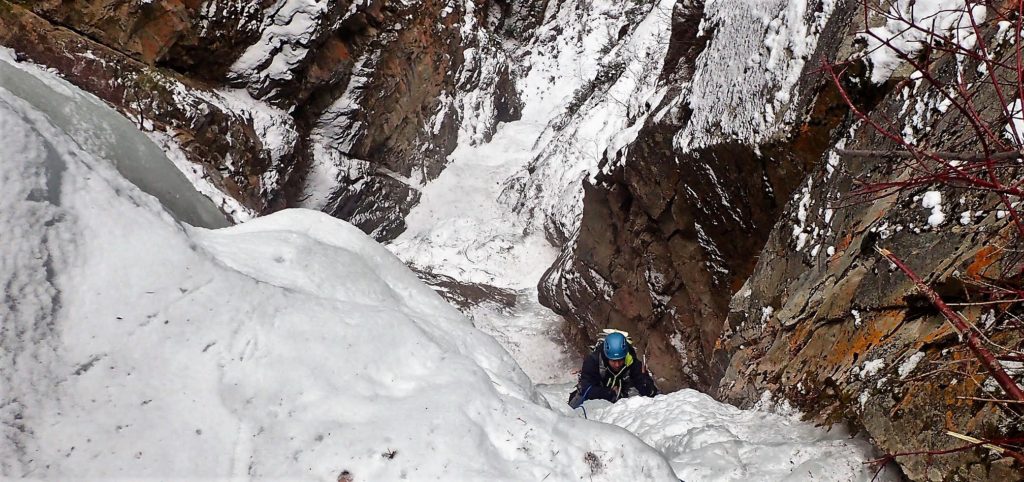
Two months into the training, I got sick. I took a couple of days off and then went out for a hike over the weekend. The following week, I was sick again and missed some workouts. I ended up taking an entire week off and restarted my training from April.
Around the end of May, I did an AeT test and was happy to see some improvement. AeT = 135.
Base Period
In the base period, core and general strength training was replaced by max strength training. The plan had detailed instructions on recommended sets/reps, weights and progression over the training period.

COVID restrictions were in effect, and my community center gym was closed. I could do my aerobic workout outdoors but ended up buying some gear for strength training at home. It was a very basic setup with a Yoga mat, two 25 lb dumbbells, a step platform, a pull-up bar and a weight vest. I also had a foam roller and an elastic band that I used on rest days.
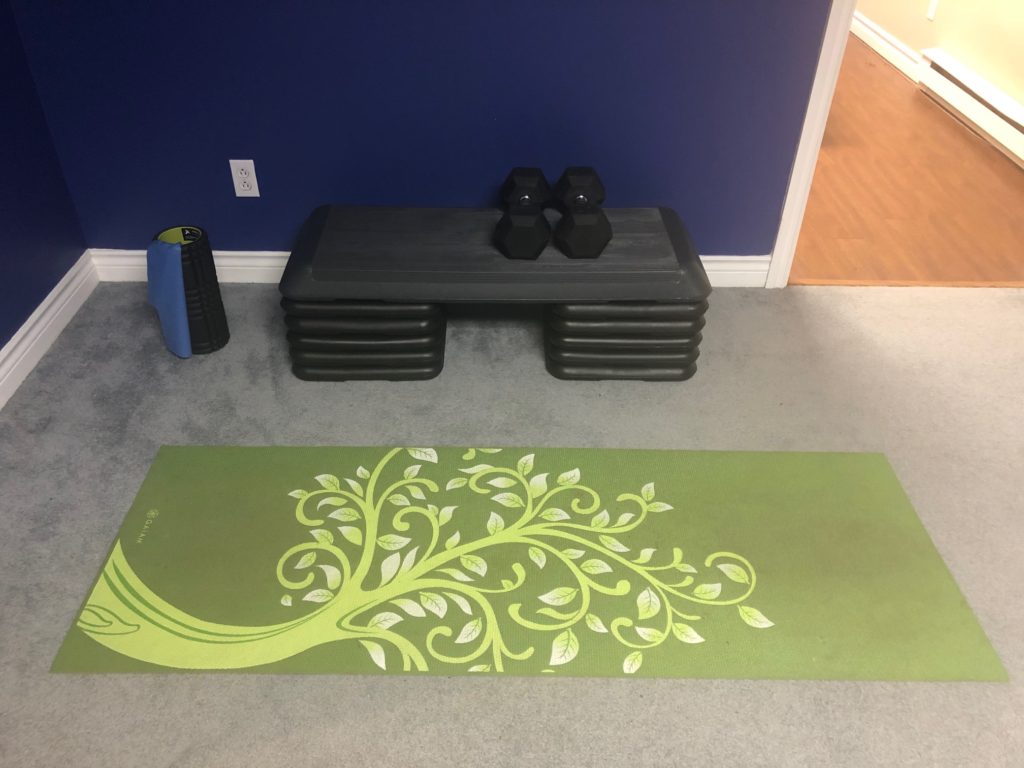

I just had one set of dumbbells at home, so I used a vest and increased weight as I progressed through the training. Towards the end of the base period, I was doing box-steps with two 25 lb dumbbells and a 30 lb vest.
As the gym was closed, I was doing weekday aerobic runs on a track. Over the weekend, I started doing 15-25 km hikes/scrambles with 1500+ m elevation gain.



Initially, it would take 2-3 days for me to recover after one of these trips and I would miss some of the workouts. Gradually, the recovery time shortened, and I was doing my workouts as per the training plan.
Garibaldi NE Face (rated AD- Ice) was the best trip of the season. It was not easy, but after months of training, I was more confident in my ability to do it and I enjoyed my time on the mountain.
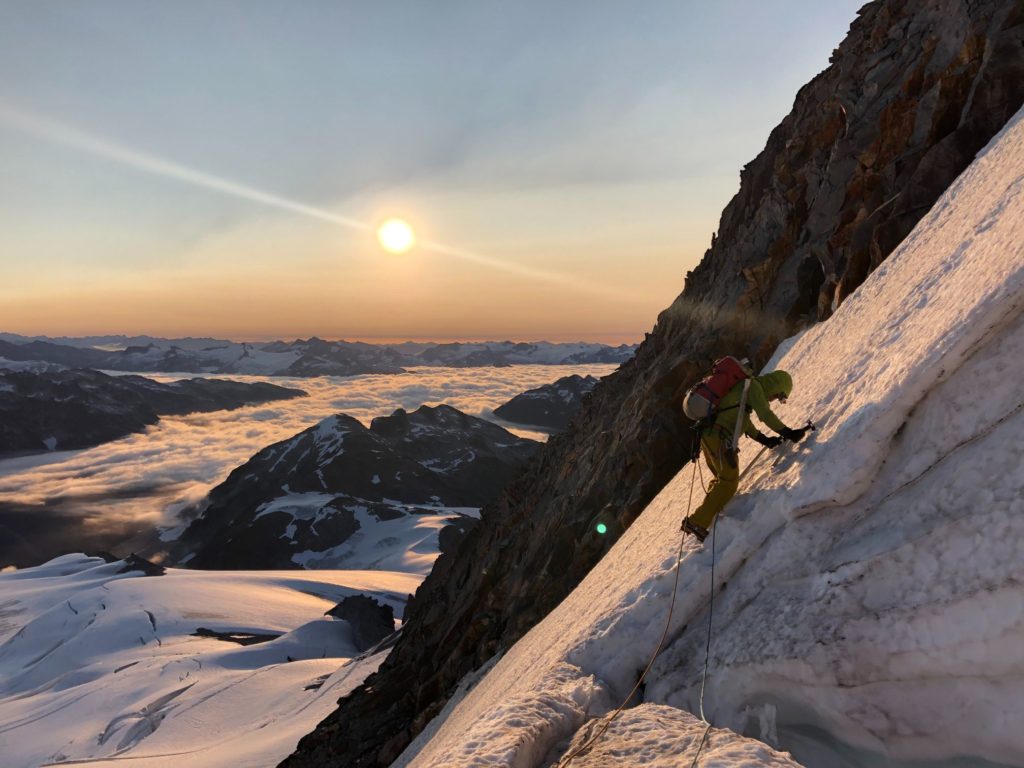
Around the end of August, I did another AeT test. AeT = 140.
Conversion to Specificity – Muscular Endurance Period
The highlight of this phase was the Zone 3 Weighted Climb – Muscular Endurance workout. The instructions were to climb a steep hill with a heavy backpack, wherein you are limited by the fatigue in your legs and not by your breathing.

Grouse mountain was perfect for this workout. After work, I could hike up one of the steep trails and then just take the gondola down. I started with a backpack weighing close to 20% of my body weight and then increased weight as I progressed through this training period. These were the hardest workouts in the entire training cycle.
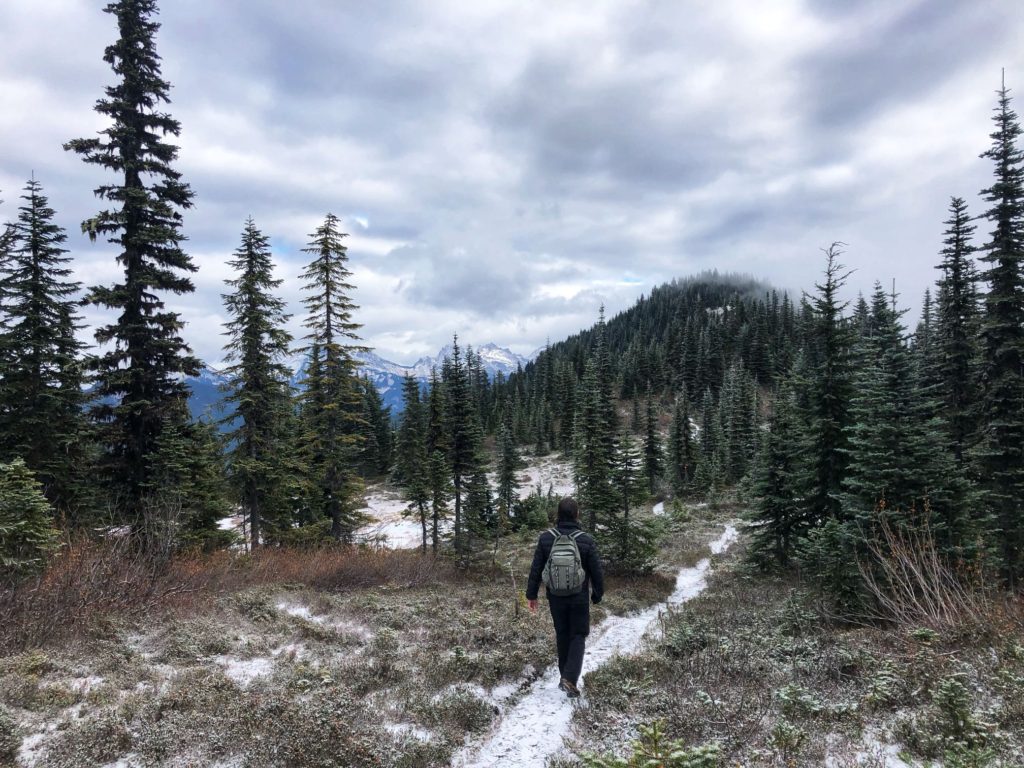
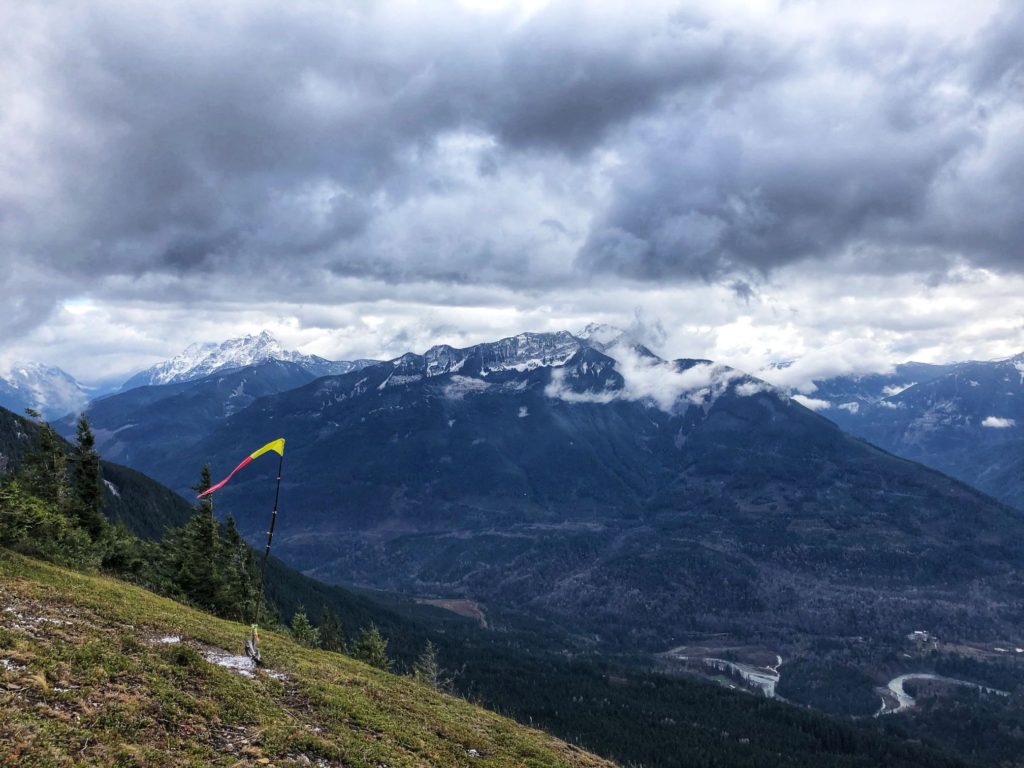
Towards the end of this phase, I did a 16 km hike to Mount Thurston with about 1350 m elevation gain. I carried a backpack weighing 20% of my body weight up and down the mountain. The next day I did a 9 km family hike with about 500 m elevation gain. It felt good.
I did my last AeT test of the training cycle in third week of November. AeT = 145.
Training Summary
Around the third week of November, I ended the first cycle of the Mountaineering Plan. Here is the training summary –
Date Range: March 30-November 22, 2020
Total Hours: 296 (including hikes/climbs), Avg. Hours/Week: 8:42
Distance: 853 km, Avg. Elevation Gain/Week: 1360 m
Hours in Zone 1-2: 78%, Zone 3-4: 22%
AeT changed from 125 to 145
Even for a recreational athlete, these numbers are not impressive, but for me, it was a significant change from where I was in 2019.
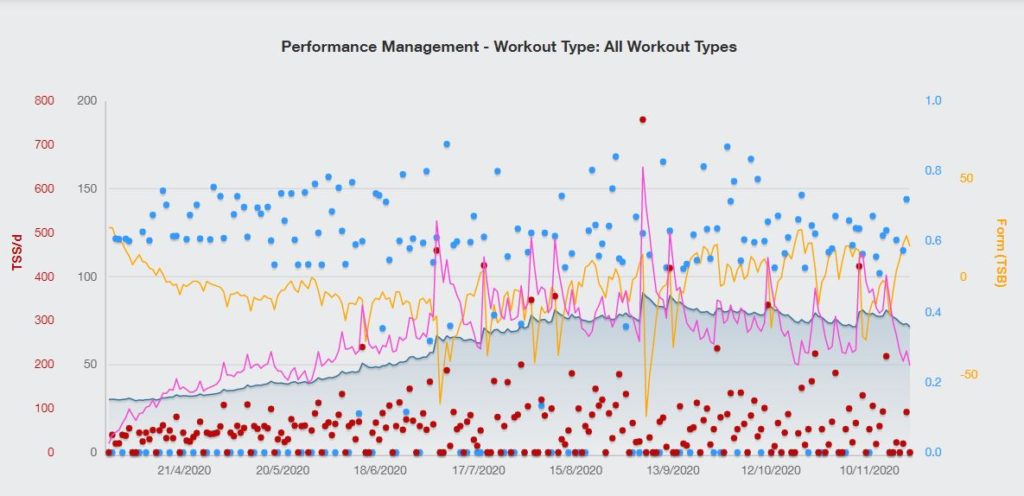
At the end of my training, the plan was to climb volcanoes in Ecuador and see how I do at 6000 m elevation. With fitness metric (CTL) around 80 for the last few months and based on my recent trips, I felt prepared for Ecuador. But, due to COVID-19, I had to cancel my travel plans.
I enjoyed my taper/rest week and celebrated the completion of training with the people who made it possible.

What’s Next?
I scheduled another phone consultation with Scott to review my training and discuss the next steps. Based on my fitness level and goals for next year, Scott recommended I repeat the 24-week plan but skip the initial transition phase. I will likely do a shorter version of this training again in spring to prepare for the next climbing season.
With COVID-19, nobody knows what next year is going to be like, and if I will be able to do any climbs. But to be honest, it doesn’t matter. As Steve House mentioned in this article, I have come to “love the process” of training.

Resources:
Evoke Endurance: Training Plans | Forum | Books | Podcast
BC Trail Info: Outdoor Vancouver | Vancouver Trails | Bivouac
If you are in Lower Mainland, check out British Columbia Mountaineering Club for trips and courses.
Disclosure: I am a member of BCMC and work part-time for Evoke Endurance. I am not affiliated with any of the other individuals or organizations. None of the links shared in this post are affiliate links.
Did you enjoy reading this post? Please share your feedback in the comments section below. Please subscribe to get weekly updates. Thank you!


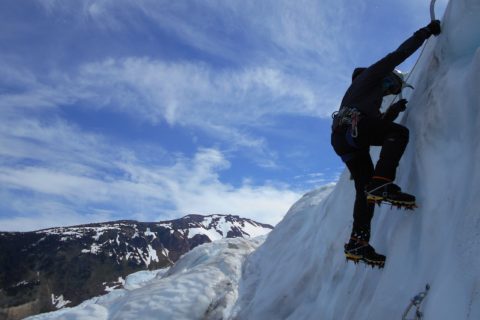
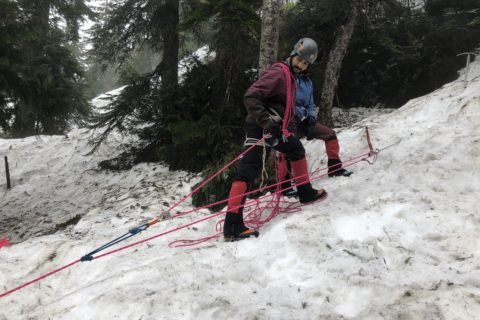
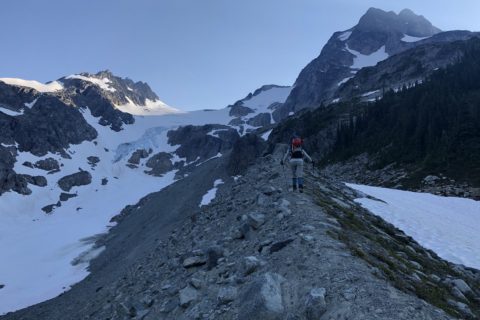

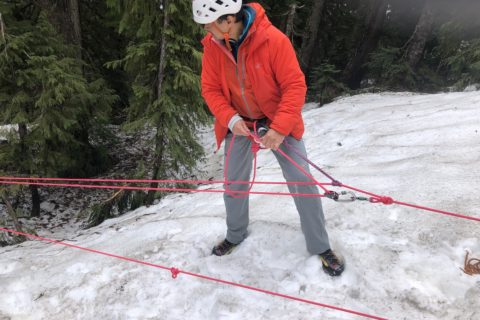
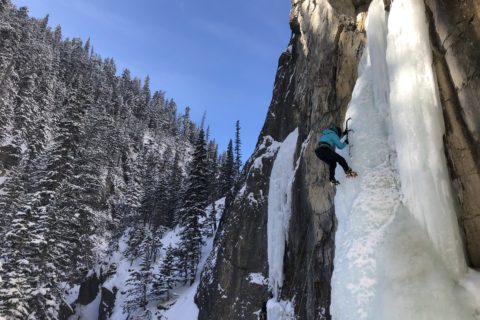
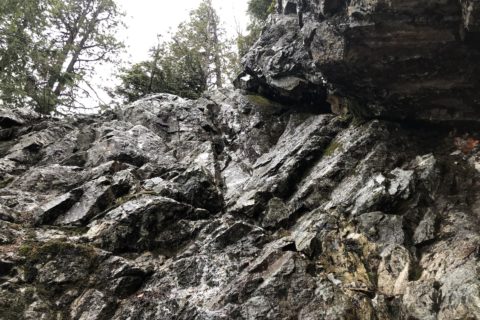
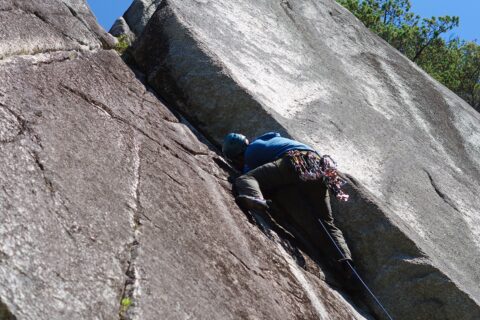
That was really good plan and execution.. Keep mountaineering. Nice to see attige and Kvya..
Thank you Punith. Hope you are doing well.
Hello!!!
Thank you very much for the huge post, very interesting, but I would like to ask you a couple of questions, mainly of TrainingPeaks utilities.
I would like to know if it is possible to “tailorized” the number of hours (to begin with a reduced work load) and to change the workout of one day and move it into another day for example exchange Tuesdays for Fridays workout.
Thank you very much for sharing your journey!
Antonio,
Thank you for your feedback. If you have TrainingPeaks Premium account, you can adjust hours as well as move around workouts. When I first started using the mountaineering plan, I had to reduce the hours and then gradually build up the volume. I cannot do a blanket adjustment for all workouts, but need to go into each workout and change the volume. You can also shift/repeat a week if needed. I hope that helps.
Good afternoon Shashi;
Thank you very much for your answer, if I understand properly it means that if you want to change the volume you have to do it for every single workout, right? And then build up by using the steep up proposed by the TFNA.
On the other hand, I am seriously thinking about using the 24th weeks mountaneering training plan, my aim is to do the Mont Blanc following the Cosmique Route: the 4,000m traverse on the summer of 2022. In order to apply the plan more than once, the idea is to restart the transiction part starting with half of the last year volume, right?
Do you have any advice or hint? Maybe about the muscular endurence or the volume?
Thank you very much for your time and advice!!
Antonio,
Yes, your understanding is correct. You have to edit volume in each individual workout and gradually increase volume every week.
For your objective, the 24-week mountaineering plan would be a good plan. It will provide you a good structure and will make it easy to follow the training. I had a one-hour phone consultation with Scott Johnston after completing my first cycle of training. Based on our discussion, he recommended I take a one-week break and then start my second cycle directly with the Base period training.
In terms of the volume, it all depends on what you have done in the past and if you have experience with structured training. Start conservative and you can always add volume if needed. On Muscular Endurance, I do a hike on a local mountain and carry 40% of my body weight. The Uphill Athlete article on Muscular Endurance is a great resource to better understand this workout.
I would recommend going through the Uphill Athlete website and its forum as there is a lot of good information/discussion on training. Wish you the very best!
Again, thank you very much for your thorought answer! Pretty useful.
I will ask you one last piece of advice about using TrainingPeaks, it is related with the CLT and TSS, I would like to know how to use the socall “fudge factors”, because if I understand properly, UA should use Heart Rate TSS in order to calculate our CLT, but to make it more accurate, some fine tunning has to be done, so my question is this tune up is done every time you do a workout? Do you use it?
Here is the article where this recomendation is explained: https://www.uphillathlete.com/trainingpeaks-metrics-ctl-tss/
Best;
Antonio
Antonio,
Yes, I use these fudge factors regularly. For e.g. On a hike, if I am carrying a backpack with 10% of my body weight and I have 300 m (1000 ft.) elevation gain/loss, then I would add a TSS of 20 (10 for the weight, 10 for the elevation gain/loss) to the original TSS calculated based on my heart rate. If I only have elevation gain and no loss (when I take the gondola down after a muscular endurance workout), I only consider half of the TSS (5 for weight, 5 for elevation gain).
On a treadmill or stairmaster, I discount the elevation gain by 50% before I apply the fudge factor. For e.g. if the total elevation gain is 600 m on a treadmill, then I only consider 300 m. Since it is just an elevation gain and no loss, I adjust the TSS by just 5 points. The key is to use the fudge factors consistently.
One thing I forgot to mention in my earlier comment is that if you are training for a goal in 2022 and you have ADS then you can delay adding Muscular Endurance workout till your AeT is within 10% of AnT.
Good morning Shashi!
Again thank you very much for the time you are taking to answer all my questions! I am happy because it is really helping me to better understand the way the program and the software works.
I think this is going to be my last question, it is related with the ADS, in order to cope with it, I know lot of Aerobic workouts have to be done, but I think I have read that this job can be done by working on the Z2 (upper end is the Aerobic Threshold) zone until it is solved and afterwards work more on the Z1, right? Or all the work should be done within the Z1 to correct the ADS? (Because the Z1 is really lot of walking and it is really mentally tough!)
Again thanks for your time!
Best!
When you have ADS, the majority of your aerobic workout will be in Z2. For me, initially, even Z2 was walk/jog pace and gradually I was able to run on a track in my Z2. I know it is tough but have patience and long term you will be rewarded with improved aerobic base and pace.
Seems a lot of “dark” working is still ahead!
Thanks Shashi for all your help!
Hello Shashi! How are you?
I am back with a new doubt… so… thank you in advance for your patient!
Maybe as English it is not my mother tongue I am not understanding properly the Forum discussions of how to add the fudge factor for the vertical gain to the hrTSS. I think it is better if I ask you the question with an example, in my case I did a trek on Sunday with no weight (so weight should not be considered) but I gain 1281m and loose 600m, so the total ascent/descent is 1800 approximately, hence which is the fudge factor I should add to my workout?
I think it should be 1800/300 = 6 * 10 = 60TSS that have to be added to my hrTSS, am I right?
Just to have the whole picture if hypothetically I would have carried more than 10% of my bodyweight then the maths would have been 1800/300 = 6 * 20 (10 for vertical and 10 for weight)= 120 to be added to the hrTSS, no?
Thank you!
Antonio,
I am doing well. Thank you!
Yes, if your total elevation gain/descent on a hike is 1800 m then you would add 60 TSS to the hrTSS in Training Peaks.
Your fudge factor for weight is correct. Just note that if you carry say 20% of your body weight then it will be 30 TSS (10 for elevation gain, 20 for weight) per 300 m of elevation gain/descent. So in this case (1800/300) * 30 = 180 as total fudge factor.
Perfect! Thank you very much (again) for your answer!
Dear Shashi,
Thank you for taking the time to report on your training. It was a very nice and interesting read. I wish you the best with your future adventures !
Florian,
Thank you for your feedback. Wish you the best with your training.
Thanks Shashi!!
Super helpful. Especially the info about ATS and the importance of different types of training. I wish you success and safety on all your future expeditions.
ATB, Jason
Thank you Jason for taking the time to read this post and sharing your feedback. I really appreciate it.
Thanks for the review Sashi,
do you have any update of how your stats improved after the second cycle?
I’m very keen to get back into mountaineering but i don’t have any specific peaks i am training for, would you say that if i have the time i should go for the 24 week program and just keep running the same programme over and over to improve the baseline fitness?
cheers
Thomas
Thomas – thank you for reading the blog post and for your feedback. My AeT continued to improve from 2020 to 2021 and I think it peaked around 155. End of 2021, I had a 1.5-2 month break in training and started my training again in 2022. I haven’t done my AeT test again, but I feel more confident about long days in the mountains and my ability to recover over 1-2 days. If you have the time, I would recommend you go for the 24-week plan and complete one full cycle. It will give you a good understanding of different phases and how your body recovers from each workout. Then you can repeat the entire plan or mainly Base and ME phase (last 16 weeks).
Vancouverite here – thanks for posting this, super helpful! Wouldn’t have known about Evoke otherwise.
Ray – sorry for the delay in response. Glad you found it helpful. Let me know if you have any questions on Evoke Endurance training plans.
Hi Shashi,
As someone just starting true ‘training’ but exercising for a long time this is an awesome read!
I’m currently preparing for a Mt Baker summit (first mountain objective ever) and about 4 weeks into my training plan from Uphill Athlete. I have ADS with an AeT at around 134 bpm currently. When I’m hiking uphill I find I need to move painfully slow to keep my HR down in zone 2, maybe 1.5-2 mph average pace. I find my HR climbs quickly into the 140-155 bpm range unless I am very deliberate about slowing down. It seems to be getting a LITTLE better over the weeks, but it’s mentally exhausting to move this slow.
I’m a naturally fast walker so maybe this is a mental hurdle, but is this a normal requirement for someone with ADS and with my current AeT?
Thank you!
Erik – thank you for your comment. I understand the frustration with the slow pace, but stay below your AeT and it will help build the aerobic base. One thing I would recommend is to have a good warm up, so that you don’t see a sudden jump in the HR. But yes, it is common to have a slow pace when you have ADS. Once your AeT improves you will be able to go at a higher pace. In one of my recent posts, I shared a summary of AeT progression and timeline (125 to 155). You can read it here – https://shashishanbhag.com/train/coaching-with-seth-keena-at-evoke-endurance/
Wish you the best with the Mt. Baker climb.